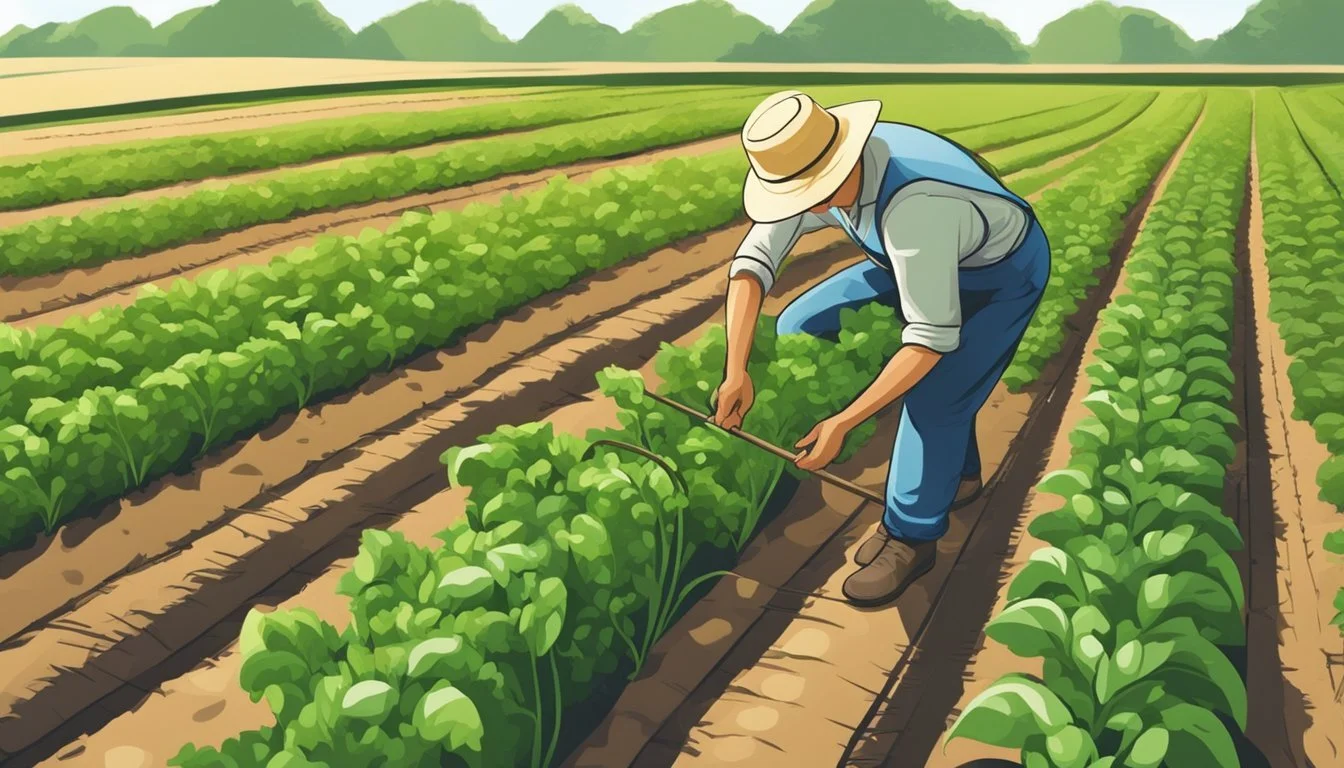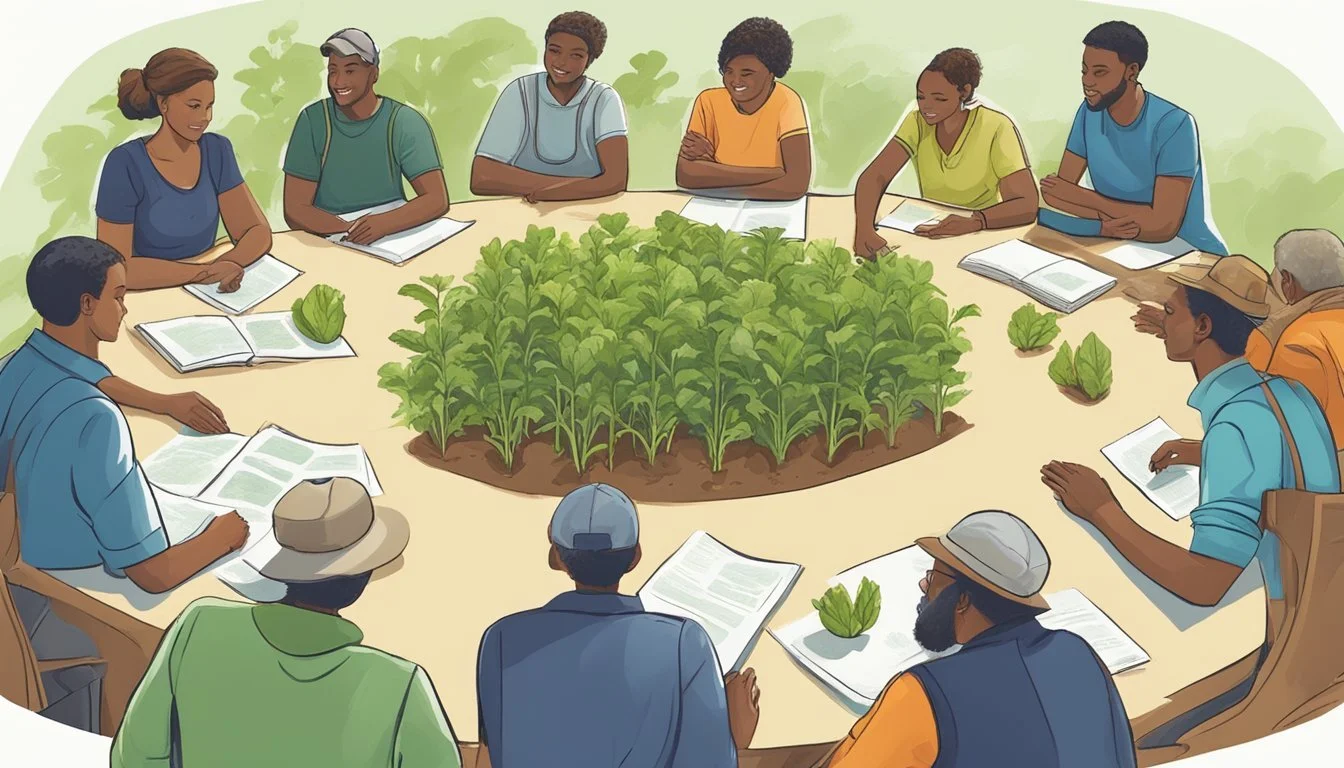Sustainable Agriculture for Beginners
An Introduction to Eco-Friendly Farming Practices
Sustainable agriculture emerges as a key player in the global effort to mitigate the environmental concerns brought forth by industrialized farming. This agricultural approach prioritizes the health of ecosystems, soil fertility, and biodiversity, all while aiming to sustainably meet the food and textile needs of the present and future. Beginners venturing into this method will discover that sustainable farming not only lessens the reliance on chemical inputs but also integrates practices that restore and protect the natural environment.
For those just beginning their journey in sustainable agriculture, understanding the core practices is vital. Composting, polyculture, and the use of heirloom varieties adapted to local climates are foundational to this agricultural practice. These methods work in tandem to improve soil health, increase biodiversity, and reduce the carbon footprint of farming activities. By adhering to these principles, novice farmers contribute not only to their livelihood but also to a larger movement for environmental stewardship and resilience.
Understanding Sustainable Agriculture
Sustainable agriculture is the convergence of practices that meet current food and textile needs without compromising the ability of future generations to fulfill their requirements. It integrates three main objectives: environmental health, economic profitability, and social and economic equity.
Historical Context and Definitions
Sustainable agriculture traces its roots to pre-industrial farming methods that were naturally inclined towards conserving resources.
In contrast to industrial farming, which tends to focus on high yields at the expense of the environment, sustainable agriculture seeks a balance. It has been defined as a method that preserves the environment, supports quality of life for farmers and society, and maintains natural resources—rendering it a viable option for the future.
Principles of Sustainable Farming
Sustainable farming operates on key principles:
Resource Conservation: Efficient use of water and energy, protecting water quality and soil health.
Biodiversity: Encouraging a variety of crops and organisms to ensure resilience and ecological balance.
Economic Viability: Ensuring that farming remains profitable for farmers, enabling them to maintain their quality of life and invest in sustainable techniques.
Social Equity: Fair treatment and good quality of life for all farm workers and the community involved.
These principles guide actions that combat climate change and promote sustainability in agriculture.
Benefits for Environment and Society
The implementation of sustainable agricultural practices offers numerous benefits:
Reduced Pollution: Minimizes the release of greenhouse gases and decreases pollution of water, air, and soil.
Preserved Ecosystems: Protects wildlife and preserves natural habitats.
Economic Stability: Ensures that farmers receive fair compensation, contributing to economic sustainability.
Health and Safety: Increases the availability of healthy, quality food options for consumers and reduces exposure to harmful chemicals.
Through sustainable agriculture, societies work towards a future where the environment is revered, quality of life is uplifted, and food production aligns with the earth's natural rhythms.
Soil Management in Sustainable Agriculture
Effective soil management is crucial for sustainable agriculture. It ensures that the soil remains healthy and fertile for future use, controls erosion, and improves organic matter through various practices such as composting and the use of cover crops.
Soil Health and Fertility
Soil health is the foundation of sustainable agriculture. It encompasses the continuous capacity of soil to function as a vital living ecosystem that sustains plants, animals, and humans. One can measure soil fertility by its ability to provide essential nutrients to plants. Practices that enhance soil health include:
Balanced use of fertilizers: It involves applying the right amount of nutrients at the correct times to match plant needs without excess that can harm the environment.
Crop rotation: This helps in maintaining nutrient balance and reducing the dependence on chemical fertilizers.
Erosion Control and Use of Cover Crops
Erosion is the process of soil being blown away by wind or washed away by water, stripping the land of its topsoil. Sustainable practices aim to reduce this risk:
Planting cover crops: These are planted during off-season times when the soil would otherwise be left bare. Cover crops such as rye, clover, or buckwheat prevent erosion and can also add organic nutrients back into the soil.
Contour farming: Farming along the natural contours of the land helps slow water flow and minimize soil erosion.
Organic Matter and Composting
Organic matter, such as decomposed plants and animal waste, is central to soil health. It improves soil structure, nutrient content, and water retention. Composting is a sustainable practice where organic waste is recycled into rich soil amendments. Key components include:
Brown materials: This includes dry leaves, branches, and twigs which provide carbon.
Green materials: Such as vegetable waste, fruit scraps, and coffee grounds supply nitrogen.
The ideal composting ratio is 3 parts brown to 1 part green, to ensure efficient decomposition.
Each of these practices contributes to a sustainable cycle that helps maintain and protect the soil for the future, ensuring that agriculture can be productive and sustainable for generations to come.
Sustainable Management of Natural Resources
Sustainable agriculture hinges on responsible water use and management. Efficient irrigation and maintaining water quality are pivotal for the conservation of water resources in farming.
Importance of Water Conservation
In agriculture, water conservation is essential not only for safeguarding environmental health but also for ensuring long-term productivity. Given that agriculture is the largest consumer of water resources farmers must adopt methods that minimize wastage. The goal is to use water in a manner that satisfies the needs of crops while preserving the resource for future generations.
Reduced-Volume and Efficient Irrigation Techniques
Reduced-volume irrigation techniques are pivotal in managing water use in agriculture. Techniques such as drip irrigation, where water drips slowly to the roots of plants, significantly reduce the volume of water used. Efficient irrigation also entails scheduling – applying water at the right time and in the right amount, which can be aided by soil moisture sensors and weather forecasts, ensuring that water is not wasted.
Drip Irrigation: Delivers water directly to the root zone, reducing evaporation.
Soil moisture sensors: Help determine the precise time for irrigation.
Weather-based scheduling: Prevents irrigation shortly before rainfall.
Managing Water Resources and Quality
Water resource and quality management involves the careful monitoring and maintenance of both surface water and groundwater to prevent water pollution. It includes utilizing buffer strips to reduce nutrient runoff, employing smarter fertigation practices to maintain optimal nutrient levels without leaching, and protecting water bodies from contamination. Protecting water from pollutants is as vital as conserving it since contaminated water can cause harm to crops, ecosystems, and human health.
Buffer strips: Vegetated areas that help filter runoff before it reaches water bodies.
Fertigation practices: The injection of fertilizers into irrigation systems to reduce leaching.
Water pollution prevention: Measures to prevent harmful substances from entering water resources.
Sustainable Agricultural Practices
Effective crop and plant management in sustainable agriculture focuses on techniques like crop rotation, diverse plantings, and holistic pest control to maintain soil health and reduce environmental impact.
Increasing Crop Diversity and Crop Rotation
To combat the pitfalls of monoculture, increasing crop diversity is vital. This not only aids in pest control by breaking the life cycles of pests but also improves soil health by varying plant demands on soil nutrients. Implementing crop rotation can reduce the need for chemical fertilizers by optimizing the natural nutrient cycle.
Implementing Permaculture and Agroforestry
Permaculture approaches agriculture with a focus on mimicking natural ecosystems, integrating human needs with the land's natural characteristics. Agroforestry, a subset of permaculture, merges crop cultivation with tree farming, creating a symbiotic relationship that enhances biodiversity and supports a more resilient agricultural system.
Pest Management and Reduced Pesticide Use
Sustainable agriculture prioritizes reduced pesticide use. Farmers can manage pests through biological control, selecting pest-resistant varieties, and creating habitats for beneficial predators. By reducing reliance on chemical pesticides, they protect non-target organisms and prevent the development of pest resistance.
Livestock and Animal Welfare
Sustainable agriculture not only focuses on crop production but also emphasizes the role of livestock and the need for high standards of animal welfare through ethical animal production practices. These elements are crucial to the longevity and productivity of farming systems.
Sustainable Animal Production Practices
Sustainable livestock production practices involve the careful management of animal feed, breeding, health, and living conditions to ensure efficiency and minimize environmental impact. Key animal production practices include:
Feed Management: Utilizing a diet that meets the nutritional needs of livestock without over-reliance on high-energy feeds that can contribute to pollution.
Selective Breeding: Choosing animals for breeding based on their ability to thrive in the specific environmental conditions of the farm, thus enhancing overall herd resilience.
Integrating Animals Into Sustainable Agriculture
Integrating animals into farming systems can lead to multiple benefits. Livestock, for example, can contribute to nutrient cycling on a farm and improve soil health. Practices include:
Manure Management: Using livestock manure as a natural fertilizer, reducing dependence on chemical alternatives and enhancing soil fertility.
Crop-Livestock Integration: Planning farm layout and operations to allow livestock to contribute to crop production, such as using them for weed control or as a power source in low-mechanization regions.
Promoting Animal Welfare and Health
The health and welfare of animals are pivotal in sustainable animal production practices and have a direct impact on productivity and sustainability. Crucial aspects of animal welfare include:
Living Conditions: Providing adequate space, outdoor access, and shelter to ensure livestock can perform their natural behaviors, reducing stress and improving overall health.
Healthcare Practices: Implementing preventative healthcare practices and reducing the use of antibiotics to avoid the development of antibiotic-resistant bacteria.
Economic Aspects of Sustainable Agriculture
Economic viability is essential when discussing sustainable agriculture and managing natural resources.
It shapes the practicality and adoption rate of sustainable agriculture practices by addressing profitability, market trends, and the well-being of family farms.
The economic viability of operations relies on efficient management of the natural resource base and the knowledge of natural biological cycles, implementing good sustainable agriculture practices like crop rotation and livestock rotation in an integrated system ensures a fool-proof farming system.
But there is much to consider when it comes to budget and investments. Investing in drought-resistant farming systems can satisfy human food production needs regardless of the weather, which can help tackle climate change challenges to farm operations but it comes at a cost.
Profitability and Economic Viability of Sustainably Produced Food
Sustainable agriculture aims to make farming practices not just ecologically sound but also economically viable.
Profitability is often the starting point, involving an analysis of costs and revenues to ensure that the practices are financially sustainable in the long term.
Economic viability extends beyond immediate profits; it encompasses resilience against market fluctuations and the ability to invest in improvements that perpetuate the farm's success.
Market Trends and Consumer Demand
Consumer demand for sustainably produced goods has surged, affecting market trends. This demand signals a shift in consumer preferences towards products that are environmentally friendly and socially responsible.
Farmers can benefit from this trend through potentially higher price points and market differentiation, capitalizing on consumer willingness to support sustainable practices that make the most of on-farm resources.
Supporting the Family Farm
The family farm stands at the heart of sustainable agriculture. Economic strategies focused on sustainable methods tend to support these farms by offering them ways to diversify income and stabilize revenue utilizing on-farm resources.
Family farms can implement sustainable practices to protect their land's natural resources and promote long-term productivity, thereby securing their future and contributing to the preservation of rural communities.
Environmental Stewardship
Environmental stewardship in sustainable agriculture involves practices that protect and enhance the natural environment. It's a commitment to preserving environmental health, embracing renewable energy, and mitigating the impacts of farming on climate change.
Conserving Biodiversity and Wildlife
Sustainable farming plays a pivotal role in maintaining biodiversity. By implementing strategies such as crop rotation and intercropping, farms can create diverse habitats that support a variety of species.
For example, maintaining hedgerows and other natural habitats on a farm can provide refuge and resources for wildlife, effectively conserving biodiversity and benefiting ecosystem services.
Reducing Greenhouse Gas Emissions
Agriculture is a significant contributor to greenhouse gas emissions, mainly through methane and nitrous oxide.
Sustainable farms reduce these emissions by adopting practices like no-till farming, which enhances soil fertility by maintaining carbon in the soil, and manure management, which can enhance environmental quality and reduce methane emissions by making use of readily available natural resources.
Additionally, integrated pest management minimizes the need for synthetic fertilizers chock full of harsh chemicals, lowering nitrous oxide levels.
Methane Reduction: Manure management practices.
Carbon Preservation: No-till farming to keep soil carbon intact.
Promoting Renewable Energy Use
Sustainable agriculture advocates for the use of renewable energy to offset the reliance on fossil fuels. Farms can harness solar, wind, and bioenergy to power operations, thereby reducing their carbon footprint.
The installation of solar panels, for instance, can provide a farm with a sustainable energy source while also reducing operational costs over time.
Solar Energy: Solar panels for on-farm energy needs.
Wind Energy: Wind turbines to harness wind power.
Bioenergy: Biomass systems that use farm waste for energy production.
By focusing on these practices, sustainable agriculture enhances the health of the environment and contributes to a stable climate.
Sustainable Agriculture Research
Sustainable agriculture thrives when government policies align with advanced research and education program implementation, and when communities actively participate in farming practices that benefit the environment and society. Sustainable agriculture research should be prioritized to better educate individuals and communities.
The Role of Government and Policies
Government involvement is pivotal in sustainable agriculture. They implement policies that can incentivize or require sustainable practices, such as crop rotation, reduced chemical use, and soil conservation. For example, subsidies for organic farming or tax breaks for farmers implementing water-saving technologies are concrete ways policies can drive change. Additionally, governments often establish standards and regulations to ensure that agricultural activities do not harm the environment.
Research and Education in Agriculture
Education plays a key role in cultivating an understanding of sustainable agricultural practices among current and future farmers. It is through sustainable agricultural research and education that individuals gain awareness about the environmental impacts of farming practices and learn about innovative solutions.
Research institutions, funded by government grants and private entities, further this education by exploring new methodologies and improving upon existing ones, ensuring that agriculture adapts to the challenges posed by climate change and food security demands.
Topics taught in agricultural programs include:
Soil health and nutrient management
Water conservation techniques
Crop genetic diversity
Grassroots Movements and Sustainable Agriculture Community Action
Many sustainable agriculture practitioners are community-focused.
Grassroots movements exemplify how local communities can influence the adoption of sustainable farming practices. Community action can range from local farmers' markets that support small-scale farmers to community-supported agriculture (CSA) programs that foster direct relationships between consumers and producers.
Community gardens provide sustainable food systems that help give access to local fresh produce in urban areas, often benefitting those on a low income, and also provide hands-on sustainable agriculture research and education and teach methods and self-sufficiency to the average person.
These initiatives encourage stewardship of the land and local engagement, creating a network of support for sustainability efforts that are tailored to the specific needs of a region.
Future Perspectives and Innovation
As the global population approaches 10 billion, and the demand for a secure natural resource base increases, the role of sustainable agriculture has never been more crucial. Innovations in technology and practices are vital to creating resilient sustainable food systems that nurture the planet and feed future generations. These innovations can help find solutions to the problems that are learned via sustainable agriculture research.
New Technologies and Mechanization
With Sustainable agricultural research comes advances in technology and mechanization, that now pave the way for more efficient farming. Precision agriculture tools, like GPS-guided tractors, optimize planting and harvesting, leading to reduced waste and improved crop yields.
Robotics play an increasingly significant role by automating labor-intensive tasks, affording opportunities for developing countries to leapfrog traditional stages of technological adoption.
Innovations:
Drones: Monitoring crop health and soil quality to enhance environmental quality overall
Automated Irrigation Systems: Enhancing water use efficiency
AI-Powered Analytics: Predicting crop yields and resource needs
Adapting to Climate Change
Sustainable agriculture must adapt to the challenges posed by climate change. Climate-resilient crops that can withstand extreme weather conditions are being developed. Techniques like conservation tillage and crop rotation improve soil health and carbon sequestration, contributing to climate change mitigation.
Climate Adaptation Strategies:
Development of drought-tolerant plant varieties
Implementation of water-saving irrigation technologies
Global View of Sustainable Agriculture
Sustainable agriculture requires a global perspective, recognizing the interconnected nature of food systems. Policies supporting sustainable practices and technological transfer are crucial for empowering farmers worldwide, particularly in developing countries, where the majority of the world’s farming occurs. International collaborations foster the sharing of knowledge and natural and human resources, driving forward a unified approach to sustainability.
Key International Actions:
Cross-border research initiatives
Funding mechanisms for sustainable projects in developing nations
Global standards and certifications for sustainable agriculture




